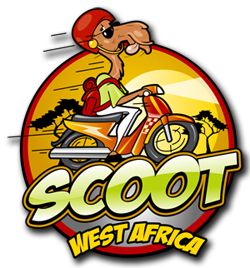
The Fulani Trail (4 countries in 2 weeks)
The Fulani make up Africa’s largest nomadic community. They are particularly well represented in West Africa, covering a lot of ground as they continually search for fresh pasture. This trip is a tribute to their wide ranging movements. We will cover four countries in two weeks, starting and ending in The Gambia.
This is a challenging but manageable ride exploring an expansive region of dramatic scenery and diverse cultures. We will discover rural Gambia and Casamance, vibrant lusophone Guinea-Bissau, and get a taste of northern Guinea before wrapping up the trip by traveling the length of The Gambia alongside the country’s namesake river, visiting parts of the country that see few travellers.
Itinerary
Please see our philosophy on itineraries. This itinerary is flexible and not necessarily chronological. Changes can be made depending on local conditions, spontaneous discoveries that can happen on the road, and the considerations of the group. Instead of a day-by-day breakdown we will share some of the highlights of the trip and then explain what to expect in terms of weather, food, lodging etc.
Arriving in The Gambia
Yes, it is The Gambia. As the story goes, this tiny sliver of a country, a former British colony sandwiched inside of Senegal, was often mixed up with Zambia so they added a “The” to distinguish it. There are many other stories wrapped up in Gambia’s history, from the origins of the country itself to Kunta Kinte and Alex Haley’s Roots.
The smallest country on mainland Africa, The Gambia may seem like it would be easy to overlook. But the country sees its fair share of visitors, mostly holidaymakers looking to roast in the sun. Many of them never venture much further than the small stretch of coastline just south of Banjul.
While we will peak our head into the more touristy Kololi/Serrekunda/Senegambia area, with its Caribbean style beaches and its full English breakfasts, we do most of our riding in the Gambia further south, exploring small villages, cruising through the Tandji Bird Reserve, and enjoying terrain that varies with each kilometer.

We will ride next to the ocean, into the jungle and into the bush for some true off-roading as we avoid the major highways.
Casamance
Our second country of the trip — Senegal! We always seem to find ourselves in the orbit of Senegal’s under-visited southern province. The truth is that there are few places in West Africa — let alone the world — like the Casamance. There is the remarkable natural beauty: the towering kapok trees, the miles of untouched beach, the mighty Casamance River. Then there is the unique mix of Diola, Fulani and Wolof cultures along with Senegal’s only recognized animist kingdom.
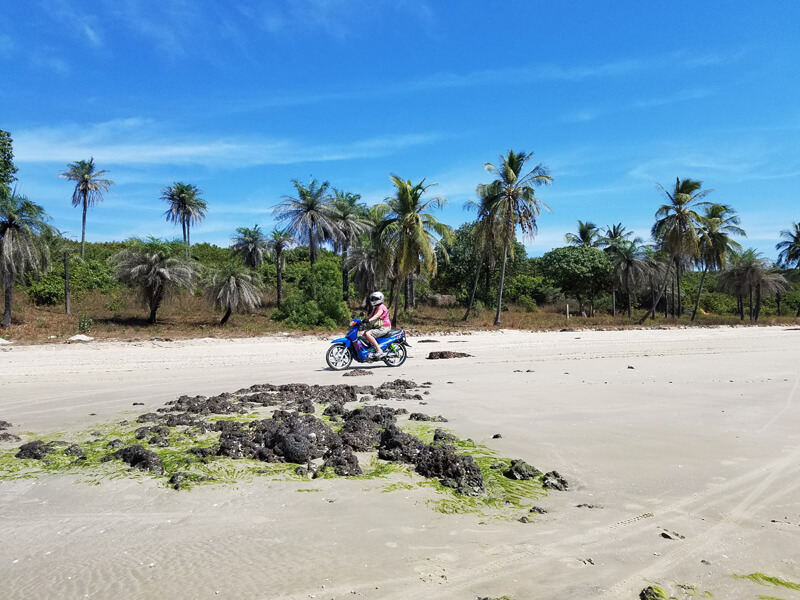
Perhaps more than anything else, it is the warm welcome around every corner that keeps us coming back.
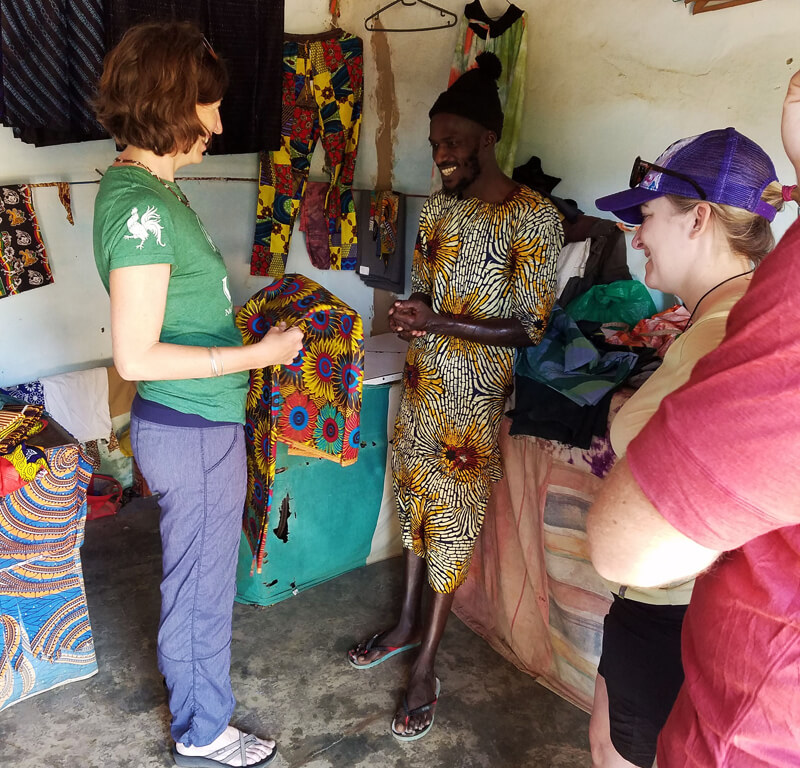
We will spend a few days in the Casamance. The riding and cultural experiences are unmatched. It doesn’t hurt that there are plenty of optional activities to enjoy as well: swimming, fishing, bird-watching, kayaking, mountain biking, drumming and dance classes or simply relaxing on the beach with a cold beverage.

It also provides us with a chance to do some riding on the beach. Depending on the tides, we can actually ride into Guinea-Bissau territory. On the way, we will likely see more beach cows than people. If you are used to seeing expansive beaches crowded with tourists and resorts, the kilometers of untouched sand may just blow your mind.
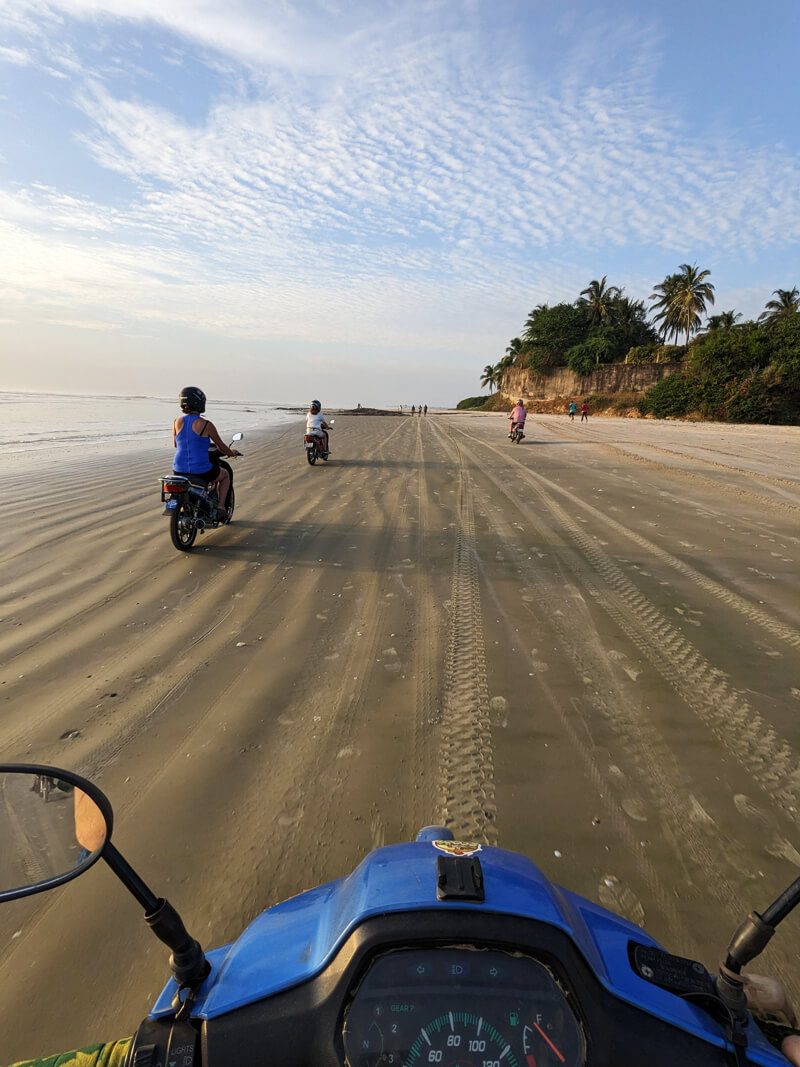
We typically wrap up our time in the Casamance with a visit to Oussouye, Senegal’s only animist kingdom. While Oussouye is subject to Senegalese law, the department is recognized by the government as a semi-sovereign entity.
The scenery – patches of forest punctuated by towering kapoks bursting through the tree-line, all surrounded by rice fields and mangroves – is a draw, but the unique cultural experience will leave the strongest impression.
There are fetishes that act as conduits between the physical and the spiritual realm, and there is a King, who serves simultaneously as a religious and a political leader (see this thread we wrote on the King of Oussouye).
Crossing into Guinea-Bissau
Our ride from the Casamance to Bissau will be the longest of the trip. It will also be one of the most interesting — a distinct transition as we enter our first lusophone country and our third country of the trip overall. It doesn’t take long to notice a change in culture and ambience. Bissau-Guineans know how to have a good time and they will regularly invite you in on the action.

Guinea-Bissau is a leading candidate for our favorite country in West Africa. There is that unique eagerness on the part of Bissau-Guineans to talk with you, eat with you and yes, dance with you. But beyond the low barrier to social interaction — something that we do experience in many parts of West Africa — there is a cultural reverance for the natural world amongst many of Guinea-Bissau’s ethnic groups that is increasingly elusive in this region, and around the world.
The natural world will indeed be front and center during our time in Guinea-Bissau. While most travelers fly in and out of the capital city of Bissau, we will get into the rural areas, exploring a countryside where the Sahel mingles with the tropics, a land filled with forests and scrubland, mangroves and tidal waters.
As if we needed another reason: freshly tapped palm wine.
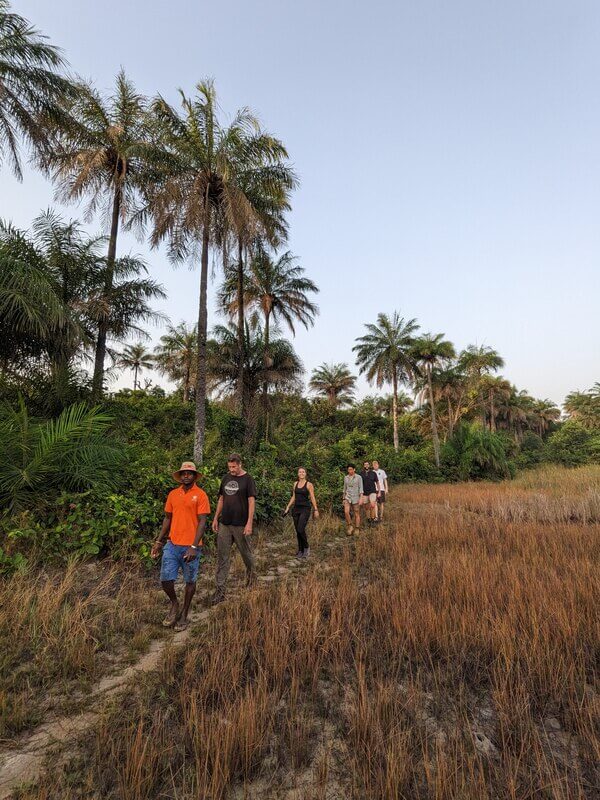
We will traverse Guinea-Bissau and make our way north to the town of Gabu. The Guinea border will not be far away at this point, and the changes in culture and landscape will be apparent.
Looping into Guinea
The previous bush tracks and bits of off-roading on the trip were all a warm-up for Guinea, where you could say the true adventure begins. While the riding is not as punishing as our Highlands trip, it will most definitely keep you on your toes.
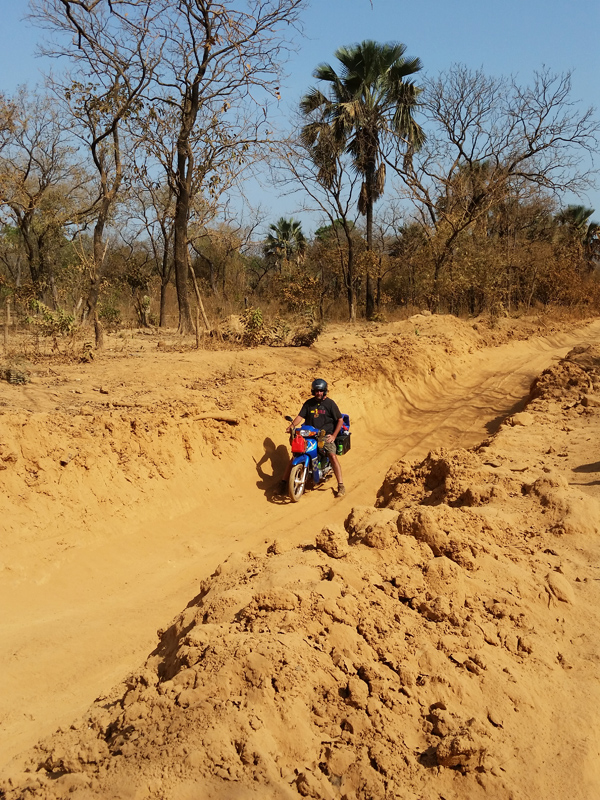
We will head to the town of Koundara where we will be able to enjoy a couple days of immersive cultural activities before we head north back into Senegal. The trip is called the Fulani Trail, and while the name choice is first and foremost a tribute to nomadism, in northern Guinea we will have a chance to really explore Fulani culture.
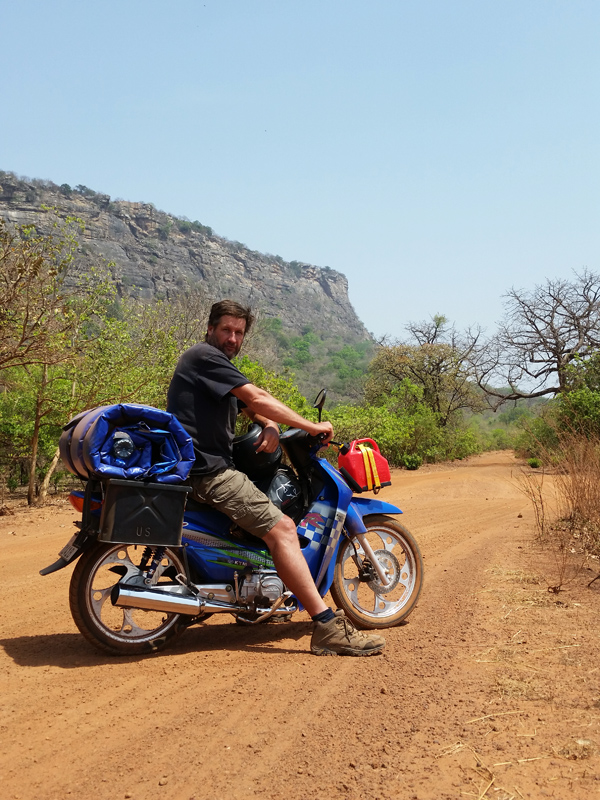
Continuing into Senegal
After a few days in northern Guinea, we will make our way back towards Senegal, traveling through the Niokolo-Badiar National Park and eventually traversing the Mampaye Forest.

The terrain will be far different than what we came across during our first foray into Senegal. This corner of the country is unquestionably part of the Sahel, a band of semi-arid land in between the tropics and the Sahara. The kapok trees will be replaced by acacias, mango trees and baobabs, and grassy scrublands will stretch for miles in all directions.
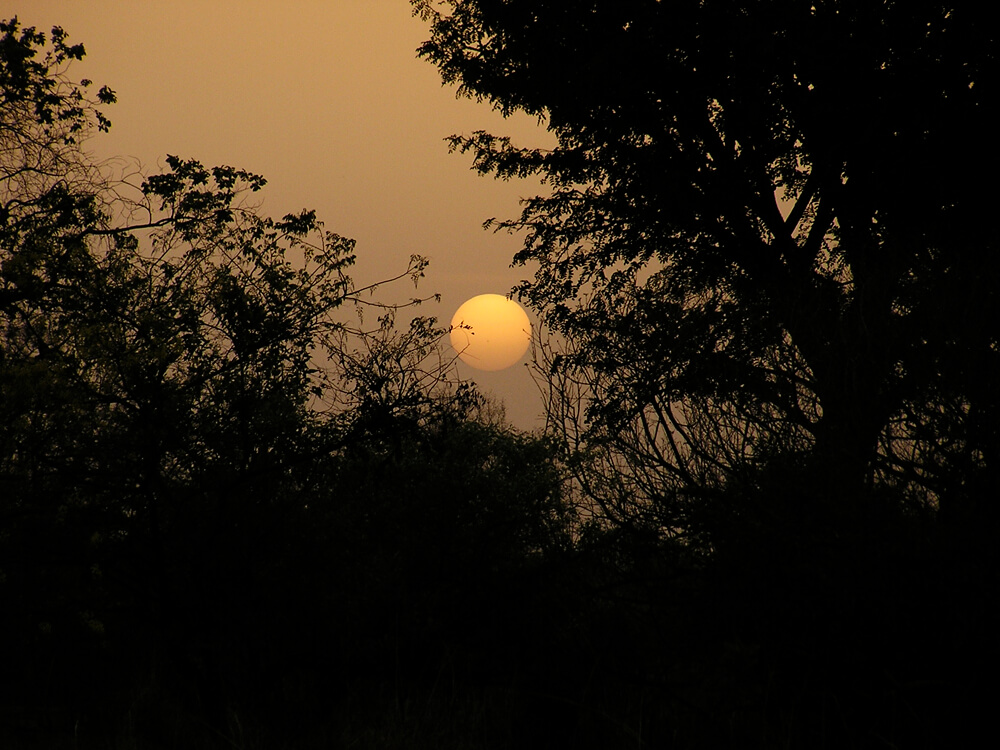
After crossing the border, we will make our way to a bush camp that will border Senegal’s Niokolo Koba National Park. We will have a chance to see monkeys, bushbucks and warthogs (hopefully not in our camp) as we make our way through backroads that see little in the way of car traffic.
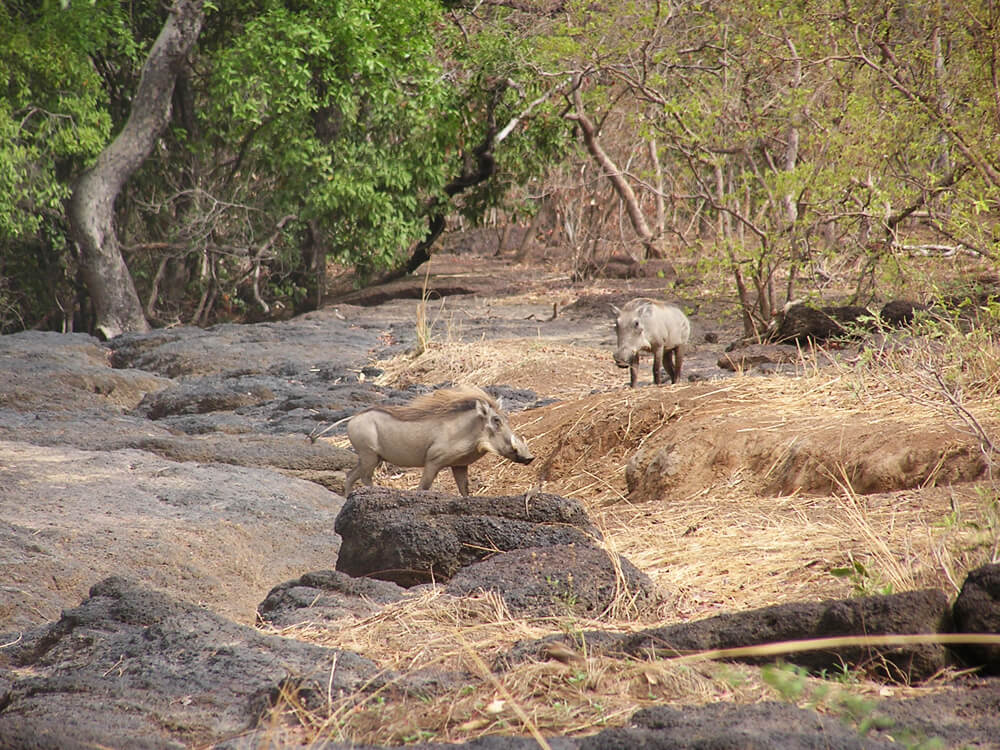
Crossing Back into The Gambia
We will reenter The Gambia in the far eastern corner, a rarely used crossing where the immigration officials are consistently surprised and amused to see us.
We will travel the length of mainland Africa’s smallest country as we gradually make our way back towards the Atlantic. On the way, we will be able to explore the Gambia River and spend time with a habituated population of chimpanzees that live on an island.
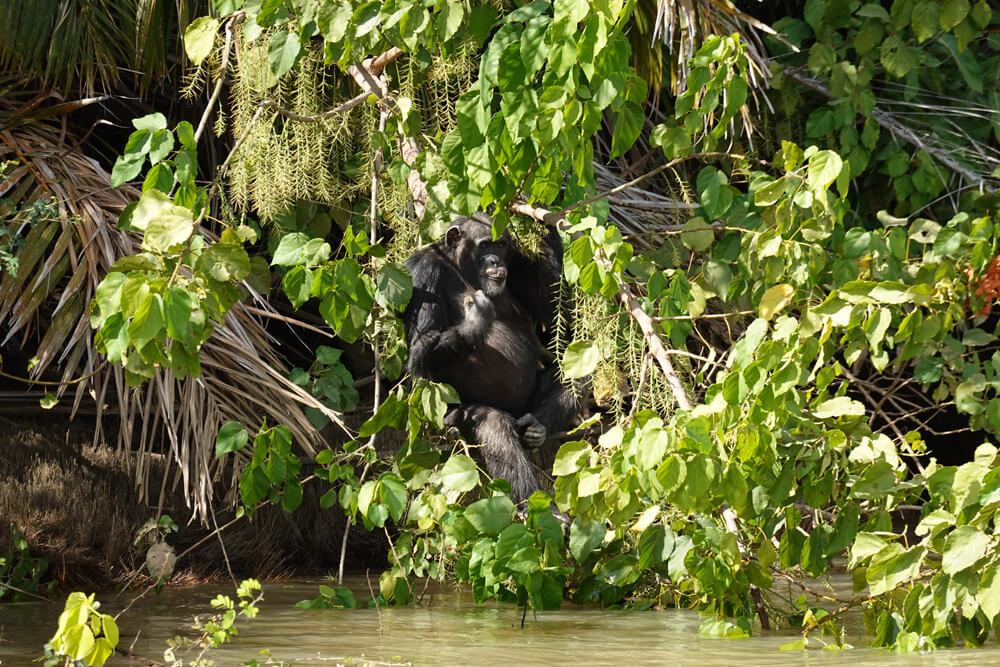
This part of the country sees few tourists and the roads don’t see much action either. Exactly how we like it.
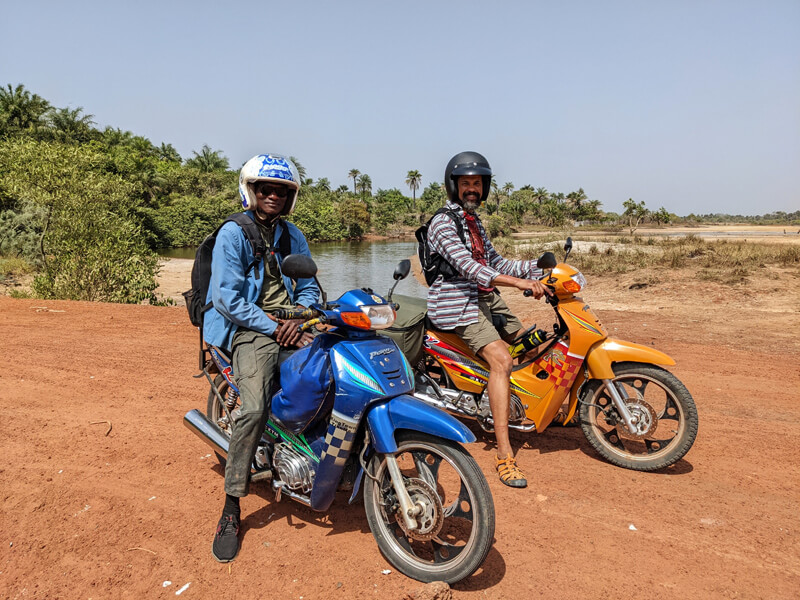
Upcountry Gambia is something special. There may not be a more relaxed corner of the continent. It probably has something to do with the river. It almost certainly has something to do with the unique cultural mix of Diola, Fulani and Mandinka.
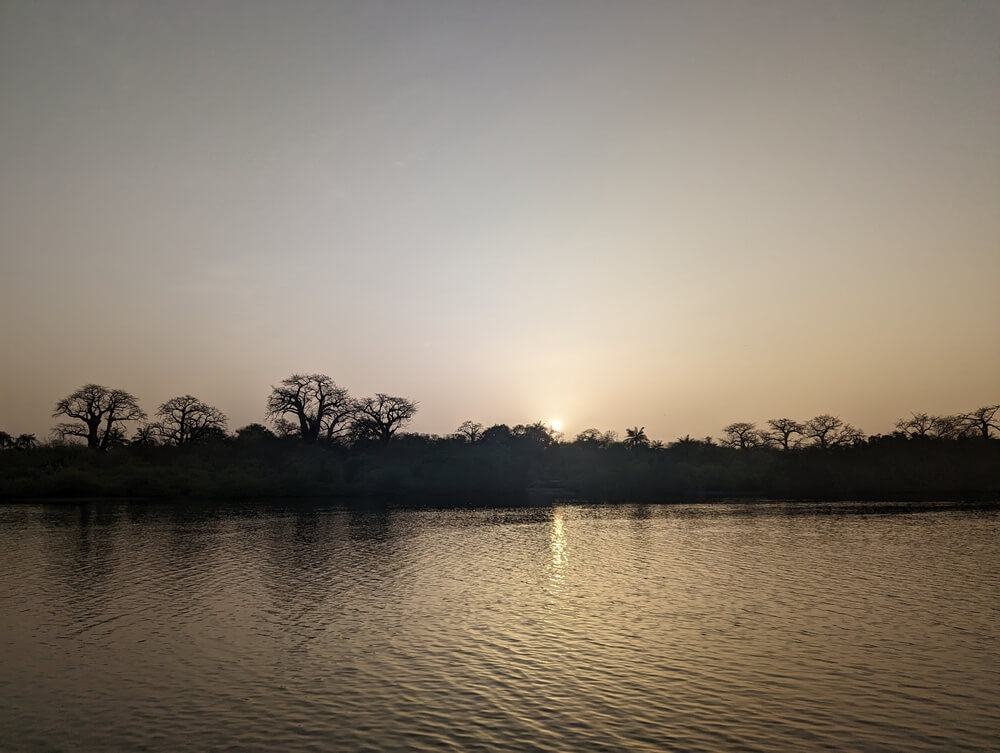
After nearly two weeks on the road, we will arrive back at the coast. You will have just traveled to 4 west African countries on a 110 cc scooter, visiting parts of The Gambia, Senegal, Guinea-Bissau and Guinea that few tourists ever experience.
Time for a hot shower, some cold drinks, a few stories and laughs, and a sunset over the Atlantic before we part aways and say, “until the next adventure.”
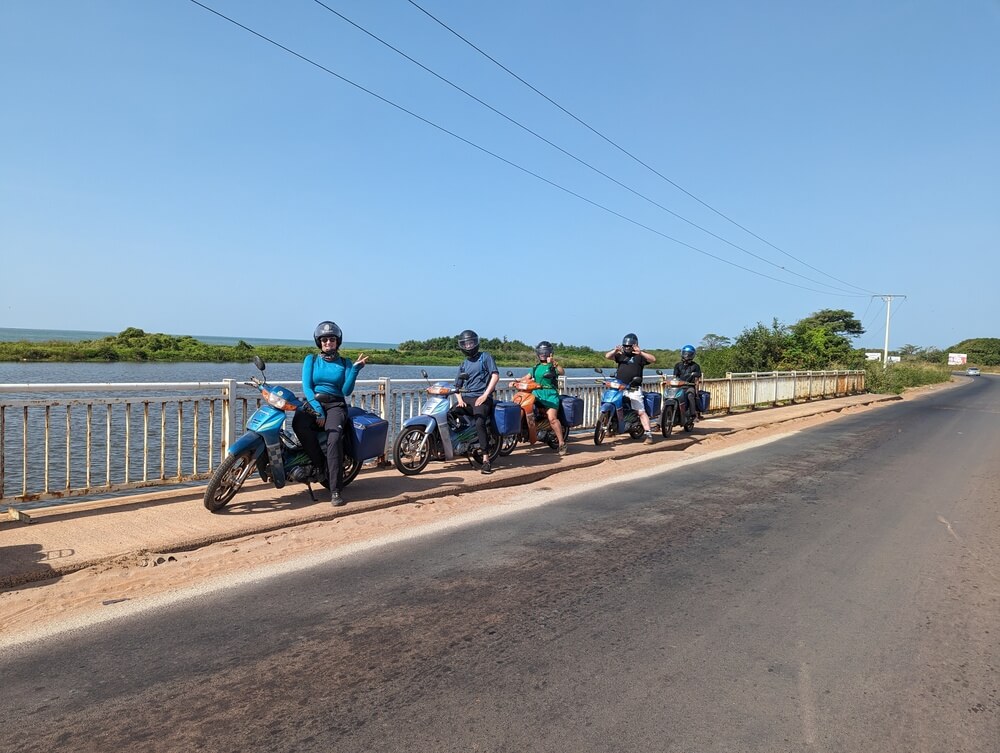
What to Expect
From November through February the weather is fairly consistent: lots of sun and persistent dry heat during the daytime. The evenings and mornings can be quite cool. In mid-February-March, the temperature will begin to pick up along with the humidity.
Please have a look at the What to Pack page for tips on clothing and sun protection.
We will be spending time in French and Portuguese speaking countries. Don’t speak French or Portuguese? Don’t worry. Many people speak at least a bit of English, and even if you do get stuck, a trip leader will always be close by. Anyway, those are just the official languages. You will also have a chance to learn some local languages, such as Wolof, Diola, Creole and Fula.
This trip is an expedition. A proper adventure. If you need certain creature comforts – or any creature comforts, really – this may not be the trip for you.
Wherever possible, we will stay at hotels and guesthouse that introduce us to the local community. We will always choose a family run place over a chain hotel. This trip will have a mix of eco-lodges, hotels/guesthouses and bush camps. At the eco-lodges, facilities will be limited but the lodging still clean and comfortable. The hotels will have regular toilets, showers, fans and air-conditioning where possible. The bush camps, are… bush camps.
Speaking of bush camps, there will be bush camps on this trip. We may be able to provide a certain amount of camping equipment. We will let you know in our pre-trip correspondence what gear you need to bring.
The riding on this trip ranges from moderate to difficult. Some of the roads are in good shape, but don’t count on a lot of tarmac. We will take it slow and take in the scenery, but it is important for us to clearly state that you need to have some riding experience before coming on this trip, and you need to be adventurous and open-minded.
On the first day of the trip we will have an orientation with the bikes to get comfortable with them. While we will offer plenty of guidance, you need to be able to handle yourself on a bike. The ability to follow instructions and to travel with a group as well as independently are paramount skills for this trip.
To go on this trip, you must have a driver’s license, and you need to have a DOT or ECE 22.05 certified helmet (more on this on the Health and Safety and What to Pack pages).
This will be a culinary adventure. To start with, we will be cooking many of our meals ourselves. We will shop in the local markets and pair local foods with tinned items we pick up in boutiques and the occasional supermarket. When not preparing our own food, we will have plenty of chances to sample the local cuisine. All four countries have a variety of local specialties.
When we dine at local eateries, the food will be prepared to order with fresh local ingredients. At times, we will not be able to choose the meal. Vegetarian and vegan options are often limited, but we can accommodate you provided you notify us in advance of the trip.
Breakfast is included every day as part of the trip price and there will be some lunches and dinners that are also included (when they are part of our accommodation). All other meals are at your cost.
Plan to arrive in Banjul the day before the trip begins at the latest. Regardless of when you plan on arriving, we can provide guidance for accommodation, things to do and places to see, depending on how much time you have before the trip begins.
As far as the trip itinerary itself: if you are expecting a by-the-minute schedule that will be respected to the letter, this is not the trip for you. West Africa is a great place for honing your patience and learning how to improvise. It’s important to keep an open mind and be ready for anything. If you have the right attitude, you will learn to love the different challenges that may arise. For more on this, please read about us and our philosophy on itineraries.
Available Dates
Cost and Booking Information
The trip cost is €2800. This cost is based on double occupancy lodging. For a single room, there is an additional €150 supplement. To secure your spot on the trip, we take a non-refundable deposit of €250. If you are unable to make it on the trip, you can use this deposit towards a future trip at a later date.
As stated above, the trip cost includes all lodging, transport, and a certain number of group meals during the trip (when it is included as part of our accommodation). It does not include airfare, visas, optional activities, drinks, and restaurant meals.
If a trip has open spots, we will accept bookings up until departure. For trips that are full, we expect trip payment no later than two months before the trip starts. Please see our page on trip policies and cancellations.
